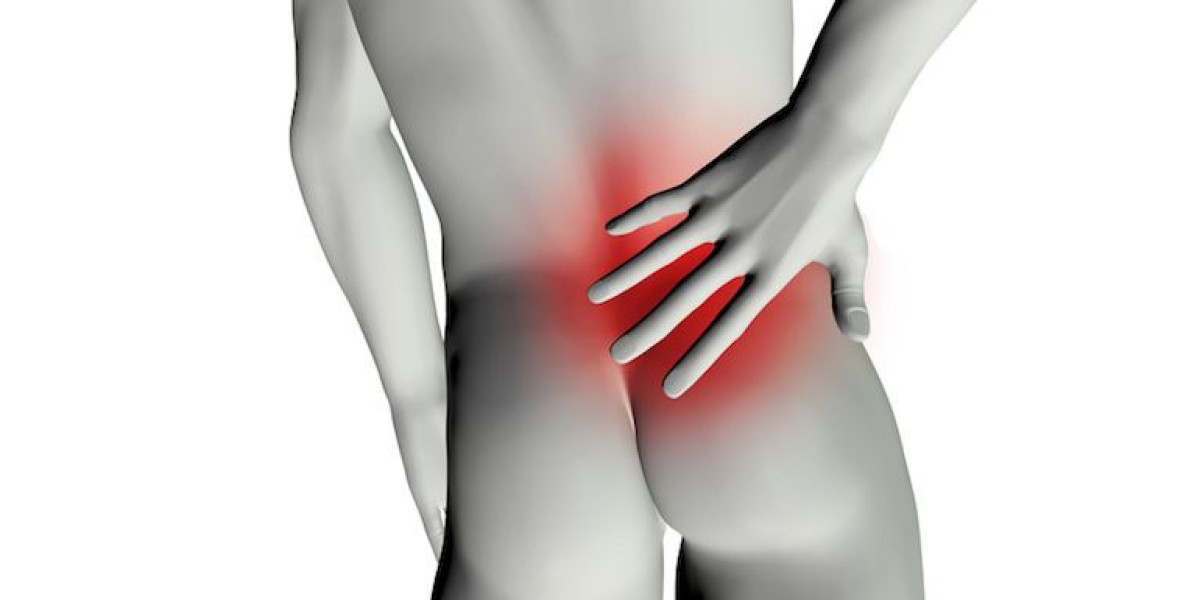Chronic pain is a persistent condition affecting millions of people globally, often leading to a significant decline in quality of life. Managing chronic pain is complex, as it often involves addressing both physical symptoms and psychological factors. Effective chronic pain management typically requires a combination of pharmacological and non-pharmacological methods. This integrated approach can provide more comprehensive relief and improve the overall well-being of those suffering from chronic pain. This article explores both pharmacological and non-pharmacological methods for managing chronic pain, offering insights into their benefits and potential applications.
Pharmacological Methods for Chronic Pain Management
Pharmacological treatments are often the first line of defense in managing chronic pain. These treatments involve the use of medications to alleviate pain, reduce inflammation, and improve function. The choice of medication depends on the type of pain, its severity, and the underlying condition causing the pain.
Nonsteroidal Anti-Inflammatory Drugs (NSAIDs)
- Description: NSAIDs, such as ibuprofen, naproxen, and aspirin, are commonly used to reduce inflammation and relieve pain. They work by inhibiting enzymes (COX-1 and COX-2) that produce prostaglandins, which are chemicals that promote inflammation, pain, and fever.
- Applications: NSAIDs are effective for managing conditions like arthritis, musculoskeletal injuries, and headaches. They are often used for mild to moderate pain.
Acetaminophen (Paracetamol)
- Description: Acetaminophen is a widely used analgesic and antipyretic medication. It is particularly effective for pain relief without the anti-inflammatory effects of NSAIDs.
- Applications: Acetaminophen is commonly used for managing osteoarthritis, headaches, and other types of non-inflammatory pain. It is often recommended for individuals who cannot tolerate NSAIDs due to gastrointestinal issues.
Opioids
- Description: Opioids, such as morphine, oxycodone, and hydrocodone, are powerful pain relievers that act on the central nervous system. They bind to opioid receptors in the brain and spinal cord to block pain signals.
- Applications: Opioids are typically reserved for severe chronic pain, such as cancer pain or pain associated with significant trauma. Due to the risk of addiction, dependence, and overdose, their use is closely monitored, and they are usually prescribed for short-term use.
Antidepressants
- Description: Certain types of antidepressants, particularly tricyclic antidepressants (e.g., amitriptyline) and serotonin-norepinephrine reuptake inhibitors (SNRIs, e.g., duloxetine), are used in chronic pain management. These medications modulate neurotransmitters that affect pain perception.
- Applications: Antidepressants are effective for neuropathic pain, fibromyalgia, and chronic headaches. They are particularly beneficial for patients who also suffer from depression or anxiety, which often accompany Managing chronic pain.
Anticonvulsants
- Description: Anticonvulsants, such as gabapentin and pregabalin, are medications that stabilize nerve cell activity and are effective in treating nerve pain (neuropathic pain).
- Applications: These medications are commonly used for conditions like diabetic neuropathy, postherpetic neuralgia, and sciatica. They are particularly useful when pain is described as burning, shooting, or tingling.
Topical Analgesics
- Description: Topical analgesics, such as lidocaine patches, capsaicin cream, and diclofenac gel, are applied directly to the skin over painful areas. They provide localized pain relief by numbing the area or reducing inflammation.
- Applications: Topical treatments are useful for localized pain, such as that from arthritis, postherpetic neuralgia, or muscle strains.
Muscle Relaxants
- Description: Muscle relaxants, like cyclobenzaprine and baclofen, help relieve muscle spasms and associated pain. They are often used in combination with other medications.
- Applications: These are typically prescribed for conditions involving muscle tension or spasms, such as fibromyalgia or back pain.
Non-Pharmacological Methods for Chronic Pain Management
Non-pharmacological approaches are equally important in managing chronic pain, especially when medications alone are insufficient or when patients prefer to avoid long-term drug use. These methods focus on lifestyle changes, physical interventions, and psychological support.
Physical Therapy
- Description: Physical therapy involves exercises and manual techniques designed to improve mobility, strength, and flexibility. It often includes stretching, strengthening exercises, and modalities like ultrasound or heat therapy.
- Applications: Physical therapy is effective for a wide range of chronic pain conditions, including back pain, arthritis, and post-surgical pain. It helps improve function and reduce pain by addressing the underlying physical impairments.
Cognitive Behavioral Therapy (CBT)
- Description: CBT is a form of psychological therapy that helps patients identify and change negative thought patterns and behaviors related to pain. It teaches coping strategies and relaxation techniques to manage pain more effectively.
- Applications: CBT is particularly beneficial for patients with chronic pain who also experience depression, anxiety, or stress. It helps reduce the emotional impact of pain and improve overall mental health.
Acupuncture
- Description: Acupuncture, a traditional Chinese medicine technique, involves inserting thin needles into specific points on the body to balance energy flow and alleviate pain.
- Applications: Acupuncture is used to treat various types of chronic pain, including migraines, osteoarthritis, and lower back pain. It is believed to stimulate the body’s natural pain-relieving mechanisms.
Massage Therapy
- Description: Massage therapy involves the manipulation of soft tissues to reduce pain, improve circulation, and promote relaxation. Techniques include deep tissue massage, trigger point therapy, and myofascial release.
- Applications: Massage is effective for managing musculoskeletal pain, such as that from fibromyalgia, muscle strains, and tension headaches. It can help relieve muscle tension and reduce pain.
Mindfulness and Meditation
- Description: Mindfulness and meditation practices involve focusing on the present moment and developing a non-judgmental awareness of thoughts, sensations, and emotions. These practices can alter the perception of pain and reduce stress.
- Applications: Mindfulness and meditation are beneficial for a variety of chronic pain conditions, including fibromyalgia, irritable bowel syndrome (IBS), and migraines. They help reduce pain intensity and improve emotional well-being.
Biofeedback
- Description: Biofeedback is a technique that teaches patients to control physiological functions, such as heart rate, muscle tension, and skin temperature, through real-time feedback from monitoring devices.
- Applications: Biofeedback is particularly useful for managing chronic pain conditions that involve stress and tension, such as tension headaches, TMJ disorders, and chronic pelvic pain.
Chiropractic Care
- Description: Chiropractic care focuses on the diagnosis and treatment of musculoskeletal disorders, particularly those involving the spine. Spinal manipulation and adjustments are common techniques used to alleviate pain.
- Applications: Chiropractic care is effective for managing chronic back pain, neck pain, and headaches. It can help improve spinal alignment, reduce pain, and enhance physical function.
Exercise and Physical Activity
- Description: Regular physical activity, including aerobic exercises, strength training, and stretching, is crucial for managing chronic pain. Exercise helps improve cardiovascular health, muscle strength, and flexibility, while also releasing endorphins, the body’s natural painkillers.
- Applications: Exercise is recommended for a wide range of chronic pain conditions, including arthritis, back pain, and fibromyalgia. A tailored exercise program can help reduce pain and improve overall health.
Nutritional Therapy
- Description: Nutritional therapy involves dietary changes to support overall health and reduce pain. An anti-inflammatory diet rich in fruits, vegetables, whole grains, and omega-3 fatty acids can help manage pain by reducing inflammation.
- Applications: Nutritional therapy is particularly beneficial for conditions like rheumatoid arthritis, migraines, and irritable bowel syndrome (IBS). It can help Pain Management by addressing underlying nutritional deficiencies or inflammation.
Heat and Cold Therapy
- Description: Heat therapy involves applying warm packs or heating pads to increase blood flow and relax muscles, while cold therapy involves using ice packs to reduce inflammation and numb pain.
- Applications: Heat and cold therapy are effective for managing localized pain, such as that from arthritis, muscle strains, and injuries. These therapies can be used alone or in combination with other treatments to provide relief.
Combining Pharmacological and Non-Pharmacological Methods
The most effective approach to chronic pain management often involves a combination of both pharmacological and non-pharmacological methods. This integrated approach addresses the multifaceted nature of chronic pain, targeting both the physical and psychological aspects of the condition. By combining these methods, healthcare providers can create a more comprehensive treatment plan that is tailored to the individual’s needs, improving pain relief and enhancing overall quality of life.
Conclusion
Chronic pain management is a complex and individualized process that requires a combination of pharmacological and non-pharmacological methods. While medications play a crucial role in alleviating pain, non-pharmacological approaches offer additional benefits by addressing the emotional, psychological, and social dimensions of chronic pain. Together, these methods provide a more holistic and effective strategy for managing chronic pain, helping individuals regain control over their lives and improve their overall well-being


